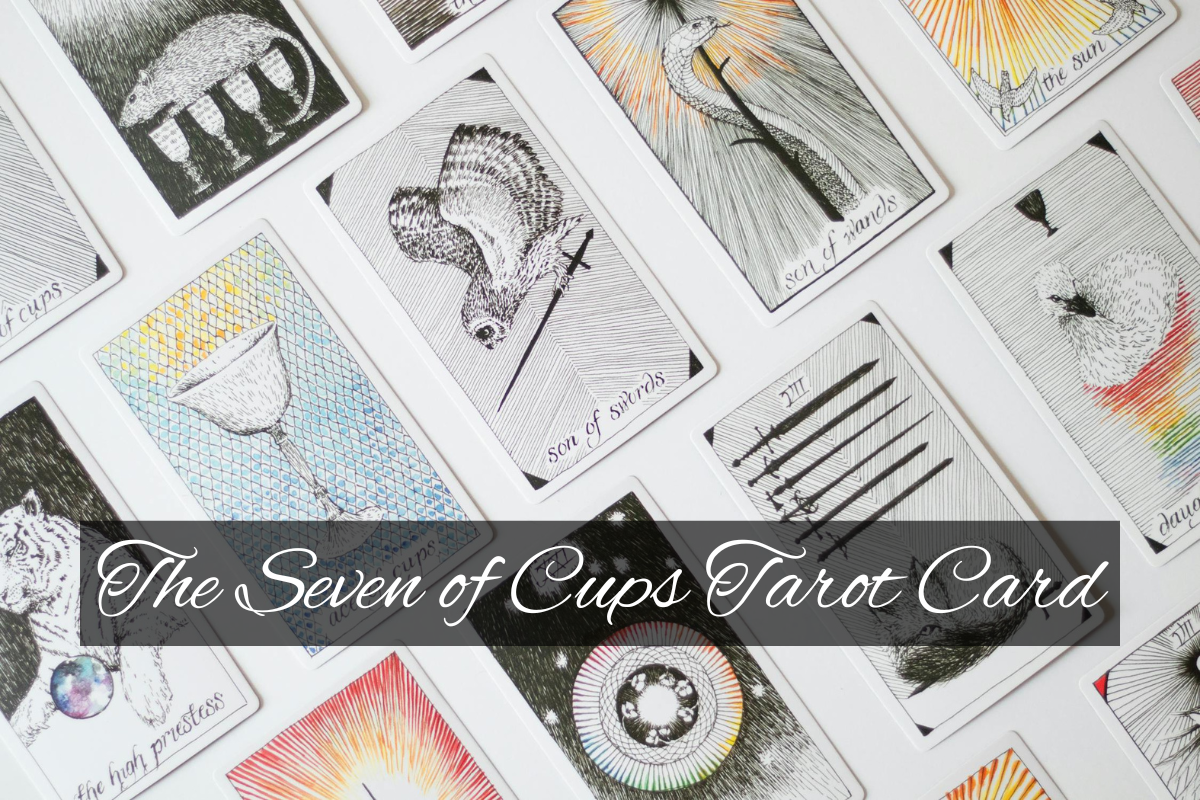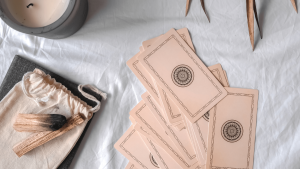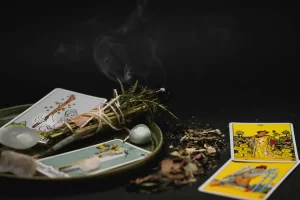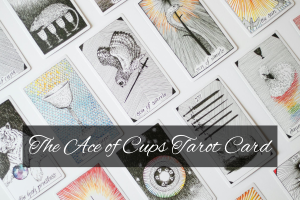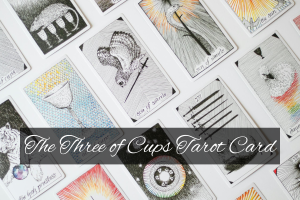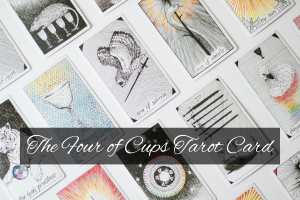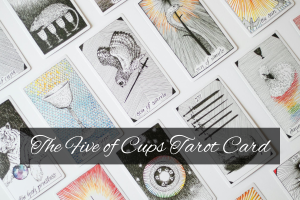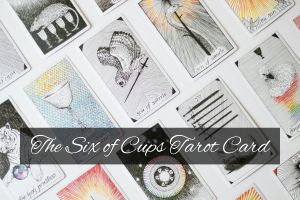The Tarot deck, with its 78 cards weaving a rich narrative of human experience, serves as a profound tool for introspection, guidance, and spiritual exploration. Within the Minor Arcana, the Seven of Cups stands as a mesmerizing and complex card, brimming with themes of fantasy, decision-making, and the interplay of dreams and reality. As part of the suit of Cups—aligned with water, emotions, intuition, and relationships—this card invites us to navigate the labyrinth of our desires and discern truth from illusion.
In this article, we will embark on a thorough exploration of the Seven of Cups, tracing its historical roots, unpacking its vivid symbolism, analyzing its multifaceted meanings, and reflecting on its role in contemporary Tarot practice. By the end, you’ll have a deep understanding of this card’s enigmatic allure and its significance in illuminating the choices that shape our lives.
Historical Context of the Tarot and the Suit of Cups
To fully grasp the Seven of Cups, we must first anchor it within the broader history of the Tarot. The Tarot emerged in 14th- and 15th-century Europe as a card game, notably in Italy with decks like the Visconti-Sforza. Initially a pastime for the nobility, it transformed into a divinatory system by the 18th century, propelled by occultists like Antoine Court de Gébelin and Jean-Baptiste Alliette (Etteilla), who imbued it with esoteric depth and symbolic resonance.
The Minor Arcana’s four suits parallel traditional playing cards, with Cups corresponding to Hearts. Governed by the element of water, the Cups suit embodies emotions, intuition, and relational dynamics. Historically, cups or chalices have symbolized emotional abundance, spiritual nourishment, and the vessels of the soul—evoking the Holy Grail in Christian mythology or the cauldrons of Celtic lore. The numbered cards within the suit trace an emotional progression, and the Sevens often signify introspection, challenge, or a pivotal moment after the harmony of the Sixes.
The Seven of Cups inherits this legacy as a card of emotional complexity, capturing the tension between imagination’s allure and the need for clarity—a theme that reverberates through its imagery and interpretations.
Symbolism of the Seven of Cups in the Rider-Waite Deck
The Rider-Waite Tarot deck, illustrated by Pamela Colman Smith under Arthur Edward Waite’s direction and published in 1909, offers the most iconic depiction of the Seven of Cups. Its fantastical imagery provides a vivid entry point for understanding the card’s meaning.
In this portrayal, a figure stands before seven golden chalices, each floating in the air and emerging from clouds. The figure’s silhouette is shadowy, suggesting ambiguity or detachment. Each cup overflows with a distinct vision: a laurel wreath (victory), a snake (wisdom or temptation), a castle (security), jewels (wealth), a dragon (power or fear), a veiled figure (mystery), and a human head (love or self). The sky is gray, and the clouds lend an ethereal, dreamlike quality to the scene.
The symbolism is rich and layered:
- The Seven Chalices: Representing an array of possibilities, desires, or illusions, the cups reflect the multiplicity of the heart’s longings. Their elevation suggests they are fantasies rather than realities.
- The Contents: Each item symbolizes a different aspiration or fear—victory, knowledge, stability, riches, danger, enigma, and connection—illustrating the breadth of human ambition and anxiety.
- The Clouds: A recurring motif in the Rider-Waite deck, they signify the intangible or subconscious, blurring the line between what’s real and imagined.
- The Figure: Faceless and distant, the figure embodies the seeker, caught in contemplation or overwhelmed by choice.
- The Gray Sky: It mirrors the uncertainty and emotional fog, amplifying the card’s sense of indecision.
Together, these elements frame the Seven of Cups as a card of imagination, temptation, and the challenge of discernment. It’s a dreamscape that asks: What do you truly seek, and what is merely a mirage?
General Meaning of the Seven of Cups
At its core, the Seven of Cups embodies the power and peril of the imagination—a moment where the heart and mind are flooded with possibilities, some genuine, others deceptive. It often appears when the seeker faces a crossroads, grappling with choices, daydreams, or the seductive pull of escapism. When this card surfaces in a reading, it signals a time of emotional complexity—a call to sift through illusions and align with authentic desires.
In its most inspiring light, the Seven of Cups celebrates creativity, vision, and the richness of possibility. It’s the spark of a new idea, the thrill of dreaming big, or the freedom to explore what could be. Yet, it also carries a shadow: confusion, distraction, or the risk of chasing fantasies that lead nowhere. The card challenges us to ground our dreams in reality, balancing inspiration with clarity.
Upright vs. Reversed Interpretations
The orientation of the Seven of Cups shifts its message, offering distinct insights in upright and reversed positions.
Upright Seven of Cups
When upright, the Seven of Cups emphasizes abundance of choice and the allure of fantasy. Its key meanings include:
- Illusion: Daydreams or desires clouding reality.
- Choices: Multiple options, requiring discernment.
- Imagination: A surge of creativity or visionary thinking.
- Indecision: Overwhelm from too many paths.
In a reading, the upright Seven of Cups might suggest a flurry of romantic prospects, a flood of career ideas, or a tendency to escape into wishful thinking. It’s a card of “what if”—urging the seeker to focus amidst the haze.
Reversed Seven of Cups
Reversed, the Seven of Cups signals a shift toward clarity or disillusionment. Possible interpretations include:
- Clarity: Seeing through illusions to the truth.
- Decision: Choosing a path after confusion.
- Disenchantment: Realizing fantasies were empty.
- Overload: Paralysis from too many options persisting.
The reversed card can indicate a breakthrough—picking one cup—or a warning against lingering in indecision. It’s a pivot from dreaming to doing.
The Seven of Cups in Different Reading Contexts
The Seven of Cups adapts its meaning to the question or spread, offering nuanced guidance. Here’s how it might manifest:
- Love and Relationships: Upright, it’s romantic fantasies or multiple suitors. Reversed, it suggests choosing one partner or seeing a relationship clearly.
- Career: Upright, it indicates diverse opportunities or unrealistic goals. Reversed, it might mean focusing on a single ambition.
- Personal Growth: Upright, it’s exploring inner desires. Reversed, it’s grounding those dreams.
- Spirituality: Upright, it reflects mystical visions or spiritual confusion. Reversed, it signals a return to practical faith.
In a three-card spread, the Seven of Cups in the “present” position might highlight current overwhelm, while in the “future” position, it could predict a choice-laden moment ahead.
The Seven of Cups in Combination with Other Cards
The Seven of Cups interacts with surrounding cards to deepen the narrative. Here are some pairings:
- With The Moon: Heightened illusion or subconscious fears.
- With The Star: Dreams aligned with hope and healing.
- With the Two of Swords: Indecision amplified by avoidance.
- With The Emperor: Structure tempering fantasy.
- With The Devil: Obsession with unattainable desires.
These combinations cast the Seven of Cups as a prism of possibility, refracting themes of choice or deception.
Psychological and Archetypal Perspectives
Psychologically, the Seven of Cups aligns with the concept of cognitive overload or the Freudian pleasure principle—chasing myriad desires without focus. From a Jungian lens, it might represent the anima/animus projecting fantasies onto the world, or the shadow’s seductive distractions. It’s a card of the psyche in flux, teetering between inspiration and delusion.
Archetypally, the Seven of Cups evokes the “Dreamer” or “Trickster”—seen in figures like Scheherazade weaving tales or the Sirens luring sailors with song. It’s the enchanted forest of options, the crossroads of the soul, tempting and testing in equal measure.
The Seven of Cups in Modern Tarot Practice
In contemporary Tarot, the Seven of Cups resonates with modern dilemmas—information overload, the allure of social media fantasies, or the challenge of prioritizing in a world of endless choice. Practitioners often tie it to mindfulness, goal-setting, and distinguishing fleeting whims from true callings.
Modern decks reinterpret it—like the Modern Witch Tarot’s seven cups with surreal objects—yet its essence of imagination persists. It’s a staple in self-help discussions and Tarot blogs, symbolizing the need to anchor dreams in action.
Practical Applications: Working with the Seven of Cups
For those drawn to the Seven of Cups, it offers practical tools to harness its energy:
- Meditation: Visualize the seven cups, choosing one to hold.
- Journaling: List your desires and sift for the authentic ones.
- Ritual: Arrange seven objects, selecting one to symbolize your focus.
- Affirmation: “I see clearly and choose wisely.”
In readings, ask: “What am I dreaming of?” or “What’s real amid my options?” The card becomes a compass through the fog of possibility.
Cultural and Artistic Influence
The Seven of Cups inspires art and narrative—from surrealist paintings to stories of wish fulfillment gone awry. Its imagery fuels poetry about longing’s mirage and songs of visionary quests, marking it as a cultural emblem of the mind’s wild dance.
Conclusion: The Elusive Clarity of the Seven of Cups
The Seven of Cups is a shimmering riddle—a card that dazzles with possibility, tempts with illusion, and ultimately calls for discernment. Whether it signals creativity, confusion, or the cusp of choice, it reminds us that our dreams shape our reality, for better or worse. Its symbolism, rooted in tradition and reframed for today, speaks to our universal wrestle with desire and truth.
To draw the Seven of Cups is to stand before a gallery of chalices—each a promise, each a question. Which will you choose? In that answer lies its magic.
